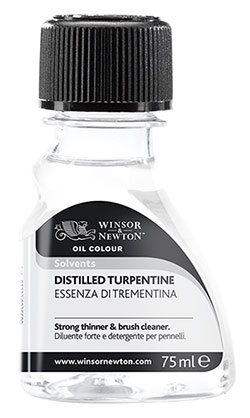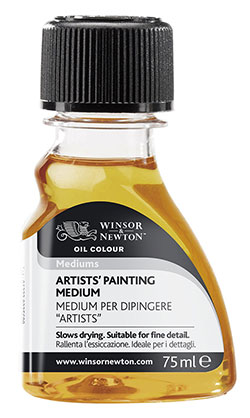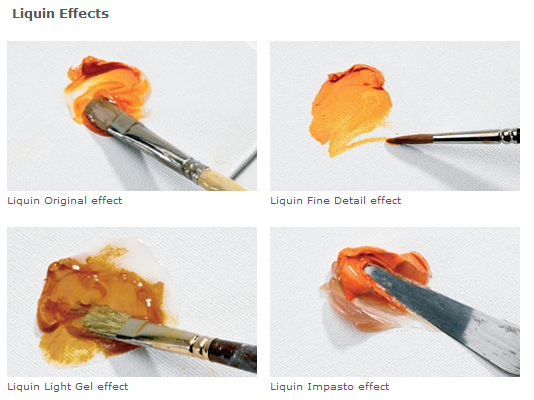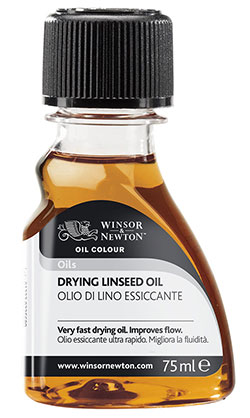£5 OFF Orders over £50 | Use Code 585C
FAQ
| Solvents Mediums For Oils Liquin Drying Oils Varnish |
|
|
|
Varnish1. How can Dammar Varnish be safely removed from an oil painting?Dammar varnish can be removed using any of our three oil colour solvents, Distilled Turpentine, Artists' White Spirit and Sansodor. It is recommended to use Distilled Turpentine as this has the strongest solvency. Using a lint free cloth dipped in the turps rub the surface of the varnish. Dammar varnish can be slightly more difficult to remove than other varnishes. The varnish should come off onto the cloth. If any colour also removes onto the cloth then it is time to stop. Work your way in patches across the entire surface of the painting. It is best to keep taking fresh pieces of cloth to aid with lifting the varnish rather than spreading it. 2. Is it possible to paint over a layer of Artists' Retouching Varnish for Oil Colour after a month of drying?It is possible to paint on top of Retouching Varnish. It is best to keep subsequent layers of colour as "fat" as possible (thinned with lots of medium) and applied as finely as possible. A layer of artists' varnish should then be applied after the last application has been allowed to dry for 6 months. 3. Why should an oil painting be varnished?Varnish is desirable for two key reasons: one, to bring the surface to a uniform gloss level (matt or gloss or somewhere in between), and; two, for protection from dust and other atmospheric contaminants. 4. How should an oil painting be varnished?Varnishes are used to protect the finished painting. Picture varnishes should be removable so that paintings can be cleaned when they have become dirty. There are two important things to remember about varnishes:
Here are some simple steps to varnishing success:
5. How can I tell when my oil painting is fully dry?Dip a lint-free rag in solvent such as Winsor & Newton Artists' White Spirit, and rub gently on the painting surface. If colour shows, additional drying time is needed. If not, your painting is ready to be varnished. 6. How can an artists' varnish be removed from a painting?If the painting is particularly valuable then it should be taken to a conservator. Otherwise, the best product to use would be our Distilled Turpentine. Dip a lint free cloth into the turps and gently rub the surface of the painting. Start in a corner. The varnish should come off onto the cloth. 8. How should an Artisan Painting be varnished?Varnishes provide a transparent coating which protects your finished painting from general dirt. Picture varnishes are removable, enabling the painting to be cleaned in the future. Varnishes should not be used as mediums for adding to the colour. Artisan paintings should not be varnished until thoroughly dry (at least 6 months). There are three Artisan varnishes available – Gloss, Matt and Satin depending upon the desired finish. The painting will benefit from being de-greased before varnishing. This can be done with either Artisan Thinner or Artists' White Spirit (mineral spirits). Simply wipe over the surface of the picture sparingly and leave to dry overnight. Apply the varnish using a large dry varnishing brush, immerse the brush in the chosen varnish and apply in long steady strokes across the painting surface. To ensure the desired result, test before use. Matt and Satin should be shaken or stirred well before use and should not be used on absorbent or damaged surfaces. 9. How can Artisan varnish be removed?Artisan Varnish can be readily removed when dirty. To remove Artisan Gloss, Matt or Satin Varnish, apply the Varnish Remover generously onto a lint free cloth and gently rub into the varnish film. If slight pigment is visible on the cloth this is an indication that the removal has been successful. Use plenty of clean cloth to ensure varnish is being removed from the surface. Avoid undue abrasion. 10. Why should an Acrylic painting be varnished?As the acrylic film approaches its final dry state, the last few evaporating water molecules leave micro-pores in the film. These pores cause the film to feel tacky, even when fully dry. The micro-pores remain open indefinitely, meaning that the porous acrylic film can freely accumulate dust, grime, and smoke from the atmosphere. While that grime may not seem to be much over a week or a month, it adds up over the course of years. The best way to protect the painted acrylic film is to varnish. Winsor and Newton produce a range of acrylic varnishes. 11. How should Winsor & Newton acrylic varnishes be applied?Thinly painted acrylic films may be vanished after 24 hours of drying time, but up to a week of drying time should be allowed for heavy or impasto layers before varnishing. In addition, varnishes may be intermixed for a variety of finishes. Here are some simple steps to varnishing success:
12. How can Winsor & Newton acrylic varnishes be removed from a painting?Acrylic Varnish can be readily removed when dirty. To remove Winsor & Newton acrylic varnishes, apply the Galeria Varnish Remover generously onto a lint free cloth and gently rub into the varnish film. If slight pigment is visible on the cloth this is an indication that the removal has been successful. Use plenty of clean cloth to ensure varnish is being removed from the surface. Avoid undue abrasion. 13. What is the best way of using Winsor & Newton aerosol varnishes?Here are some recommendations on how to use Winsor & Newton aerosol varnishes and avoid clogging of the nozzle:
14. How quickly does Japan Goldsize dry?Japan Gold Size is very fast drying and therefore will be dry within a few hours at average temperature and humidity. |












 Solvents
Solvents Mediums For Oils
Mediums For Oils Liquin
Liquin Drying Oils
Drying Oils